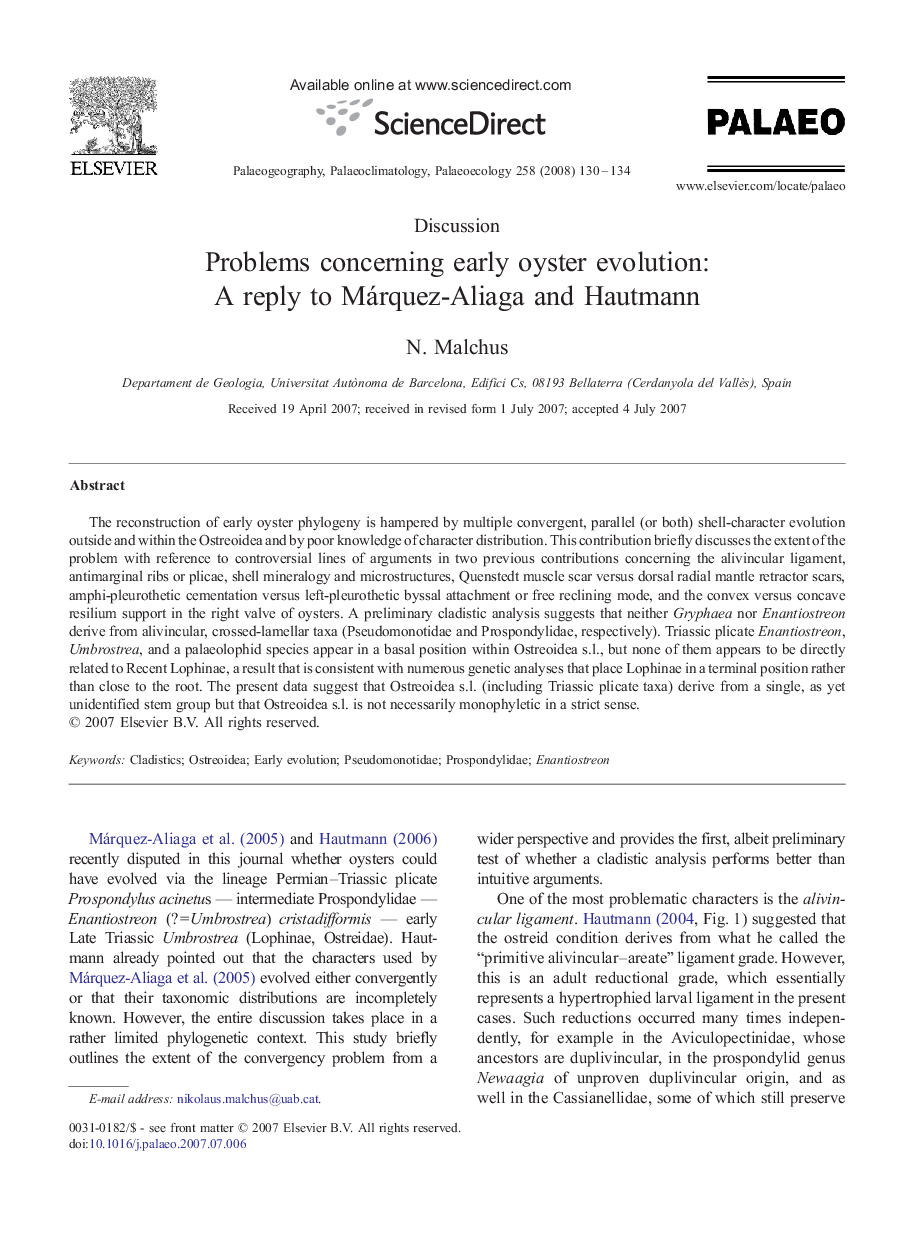| Article ID | Journal | Published Year | Pages | File Type |
|---|---|---|---|---|
| 4468788 | Palaeogeography, Palaeoclimatology, Palaeoecology | 2008 | 5 Pages |
The reconstruction of early oyster phylogeny is hampered by multiple convergent, parallel (or both) shell-character evolution outside and within the Ostreoidea and by poor knowledge of character distribution. This contribution briefly discusses the extent of the problem with reference to controversial lines of arguments in two previous contributions concerning the alivincular ligament, antimarginal ribs or plicae, shell mineralogy and microstructures, Quenstedt muscle scar versus dorsal radial mantle retractor scars, amphi-pleurothetic cementation versus left-pleurothetic byssal attachment or free reclining mode, and the convex versus concave resilium support in the right valve of oysters. A preliminary cladistic analysis suggests that neither Gryphaea nor Enantiostreon derive from alivincular, crossed-lamellar taxa (Pseudomonotidae and Prospondylidae, respectively). Triassic plicate Enantiostreon, Umbrostrea, and a palaeolophid species appear in a basal position within Ostreoidea s.l., but none of them appears to be directly related to Recent Lophinae, a result that is consistent with numerous genetic analyses that place Lophinae in a terminal position rather than close to the root. The present data suggest that Ostreoidea s.l. (including Triassic plicate taxa) derive from a single, as yet unidentified stem group but that Ostreoidea s.l. is not necessarily monophyletic in a strict sense.
